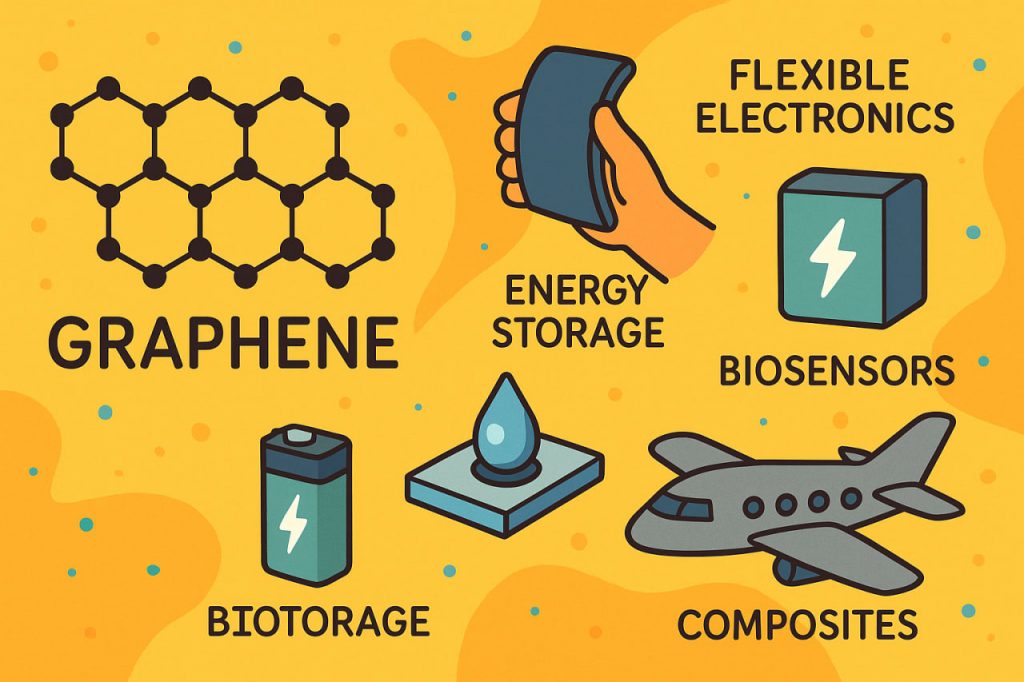Graphene is a groundbreaking material that has captured the attention of scientists, engineers, and industries around the world. Composed of a single layer of carbon atoms arranged in a hexagonal lattice, it is the thinnest material known, yet remarkably strong, flexible, and conductive. Since its discovery in 2004, graphene has been hailed as a “wonder material” with potential to revolutionize numerous fields, from electronics to medicine.
Unique Properties of Graphene
Graphene combines several extraordinary qualities:
- Strength – It is about 200 times stronger than steel.
- Lightness – Being just one atom thick, it is incredibly lightweight.
- Electrical conductivity – Graphene conducts electricity more efficiently than copper.
- Thermal conductivity – It transfers heat extremely well, making it useful in cooling systems.
- Flexibility – Despite its strength, graphene can bend without breaking.
Applications in Electronics
One of graphene’s most promising uses is in flexible electronics. It can be used to create ultra-thin touchscreens, foldable smartphones, and transparent conductive films. In transistors, graphene offers the potential for extremely fast processing speeds, enabling next-generation computing devices.
Energy Storage and Generation
Graphene is a game-changer for batteries and supercapacitors. It allows for quicker charging times, higher energy capacity, and longer lifespan. In solar panels, graphene-based materials improve efficiency while reducing weight, making them ideal for portable and space applications.
Medical and Biotechnology Uses
Graphene’s high surface area and biocompatibility make it suitable for biosensors, drug delivery systems, and medical imaging. It can detect specific molecules, enabling rapid disease diagnostics. In regenerative medicine, graphene-based scaffolds support the growth of cells for tissue repair.
Industrial and Environmental Applications
Graphene-enhanced composites are used in aerospace, automotive, and sports equipment, offering superior strength without adding significant weight. In environmental technology, graphene-based filters can purify water and remove contaminants at a microscopic level.
Challenges and Future Potential
Despite its potential, large-scale production of high-quality graphene remains a challenge. Costs are gradually decreasing as manufacturing methods improve, and research is ongoing to integrate graphene into everyday products. As these challenges are overcome, graphene could become a standard material in multiple industries.
Glossary
- Graphene – A single layer of carbon atoms in a hexagonal lattice with exceptional properties.
- Supercapacitor – An energy storage device that charges and discharges much faster than traditional batteries.
- Biosensor – A device that uses biological elements to detect specific chemical or biological substances.
- Composite – A material made from two or more components with different properties.
- Regenerative medicine – A field of medicine focused on repairing or replacing damaged tissues and organs.


